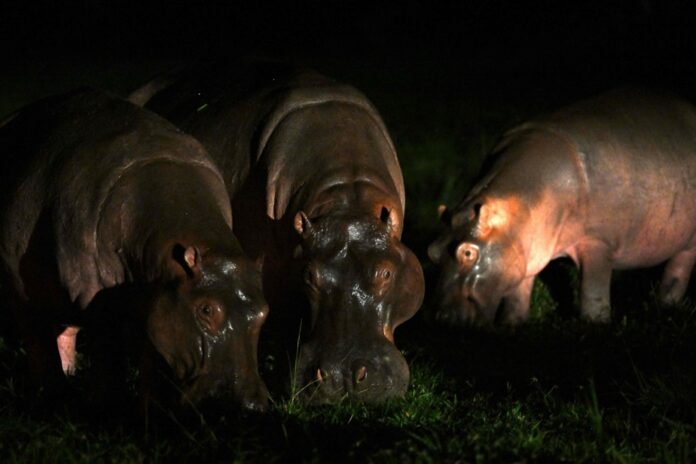(Doradal) In Africa, it tops the list of the deadliest animals for humans. In Colombia, he roams freely in the waters of the Magdalena River: Escobar’s hippopotamuses, a cumbersome legacy of the late drug lord, never cease to be talked about.
These herbivores of almost two tons live freely in the province of Antioquia, in the north of Colombia, to the point of having become a tourist attraction.
But with what could today be the largest herd of hippos outside the African continent – there are about 160 of them – experts say they fear the occurrence of serious accidents.
A few months ago, one of them burst into the courtyard of a school, near the town of Doradal. “We took refuge in the classrooms,” Dunia Arango, a teacher used to teaching with the guttural sound of mammals, told AFP.
A new herd seems to have taken up residence in a small lake about twenty meters away, observes David Echeverri, an official of Coronare, the local environmental authority. “Children are playing around here, they can approach the group at the risk of causing tragedy.”
Behind him, a family of three hippos swim peacefully with their noses and ears barely protruding from the surface of the water. “There you see them very calm. But their behavior is unpredictable. At any time they can attack,” the official points out.
Pablo Escobar had decorated in the late 1980s the zoo of his whimsical hacienda, a hundred kilometers southeast of Medellin, with a handful of hippos.
When he died – he was killed by the police in 1993 – the animals were left to their own devices and reproduced uncontrollably in an area criss-crossed by rivers, swamps and marshes. A perfect habitat for this mammal which stays in the water for most of the day, before coming out at dusk to graze on the grass.
Sterilization, transfer to zoos abroad, hunting: all solutions have been considered by the authorities, who in 2022 declared the species “invasive”.
Too expensive, the sterilization option was abandoned. As for hunting, it made the defenders of the animal cause jump. Now, there is talk of a transfer of some 70 individuals to India and Mexico.
In the region, the imposing herbivores are feared but also now adored. They have indeed become one more attraction for the thousands of tourists who visit the hacienda of the most famous drug trafficker every year.
A plaster hippopotamus adorns the main park in Doradal, where the animal is displayed on the facades of many shops and its figurines are sold as souvenirs everywhere.
Alvaro Diaz, a 40-year-old fisherman, offers his services for excursions on the Magdalena to observe the animal. “We see them very often […] we live in peace with them,” he says.
John Aristides, another 33-year-old fisherman, remembers like yesterday that afternoon in October 2021 when he cast his fishing rod from the bank of a stream: “When I stretched out his arm, the hippo lunged at me,” he says. He bit off his left arm and “threw him about two meters […]”. The unfortunate fisherman spent nearly a month in hospital.
This is the most serious incident recorded to date, according to David Echeverri. “If we don’t do something, what awaits us are thousands of hippos roaming” all over the place.
Biologists warn them that they are displacing local wildlife, including the manatee, an endangered species. Cattle breeders denounce the damage caused by their nocturnal wanderings.
Researchers from the National University, a public body, estimate that the population could reach 1,000 specimens by 2035.
“Leave a few!” However, pleads from her little school Dunia Arango, saying she got used to living with them.


















